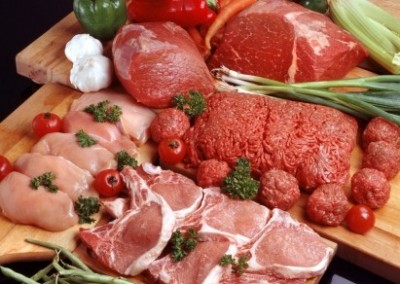GCC food consumption to hit 52m tonnes by 2019

Alpen’s “GCC Food Industry 2015” report upgrades its last set of predictions for food consumption growth from 2013, based on higher IMF forecasts for per capita GDP growth across the GCC. Combined with population increases, stronger GCC economies are likely to drive people in the region to buy more, and more varied, food in the coming years.
Meat up, grain down
While grains and cereals will remain the largest food category by consumption, growth in the category will slow to below the regional average at 3%, with meat and fruit to rise above average at 4.4% and 3.8% respectively. As of 2019, Alpen estimates grains will make up 46.5% of GCC food consumption, with fruit on 13.9%, dairy on 11.7%, vegetables on 11.5%, and meat on 8.2%.
“The growing population base and increasing affluence within the GCC countries is not only expected to result in an increase in food consumption but also in a change in the consumption pattern. High health awareness and a developing taste for a westernised diet, introduced by the increasing expatriate population, are bringing about a change in the region’s dietary habits, creating demand for organic and international foods,” said Rohit Walia, executive chairman of Alpen.
“Limited arable land and acute water shortage means that GCC countries will continue to rely heavily on food imports to meet the needs of the expanding population. At the same time governments consider food security to be a priority and have made multi-billion dollar investments towards improving their country’s food security,” he added.
Multicultural shift
Across the GCC, an increasingly young, urban and affluent population is driving demand for international, high-quality and processed foods, according to Alpen. This shift has been encouraged by the high proportion of expatriate workers in the region, which Alpen estimates as 80% of the workforce, not only creating demand for their national cuisines, but also introducing them to wider audiences – a trend also driven by growing numbers of outbound GCC tourists.
The highest growth will come from the GCC’s smaller member states, with Saudi Arabia seeing only 3% annual consumption growth, down from 7.8% between 2009 and 2014, reducing its overall share of GCC food consumption from 70% in 2012 to 60% in 2019. In contrast, Qatar’s consumption will grow 5%, and the UAE’s 4.8% on average over the next four years.
Oman and Kuwait are also forecast to lag behind the average growth rate, at 3.2% and 3.1% respectively. Bahrain will be the only GCC state to see lower growth than Saudi Arabia, at just 2.7% on average over the next four years.









